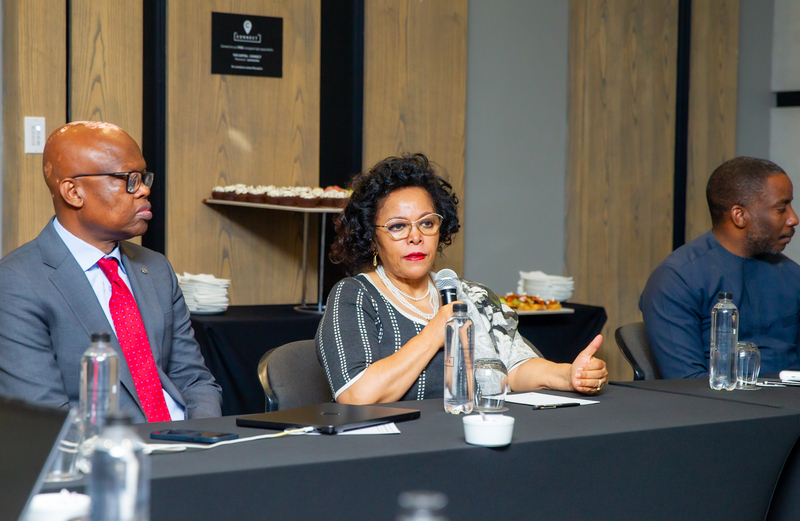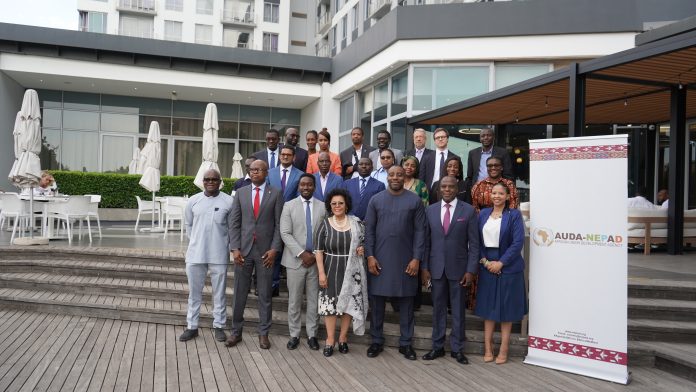The African Union Development Agency (AUDA-NEPAD) and the Alliance of African Multilateral Financial Institutions (AAMFI) recently held two days of high-level talks in Sandton, South Africa, to agree on a new framework for funding Africa’s infrastructure needs through domestic resources. The meeting, which ran from October 7 to 8, brought together executives from leading African financial institutions to design mechanisms that can mobilize local capital and reduce reliance on external borrowing.
AUDA-NEPAD Chief Executive Officer Nardos Bekele-Thomas said the partnership aims to align Africa’s development priorities with sustainable, internally financed growth. The agenda reflects a broader continental shift toward financial autonomy, as governments face shrinking concessional financing and higher debt-servicing costs. The focus is on how to fund the next generation of infrastructure, from power and transport to digital connectivity, through mechanisms built and owned by Africans.
Read also: Africa calls on G20 to match climate ambition with equity, finance, and policy space
At the center of the discussions is the operationalization of the African Union Development Fund (AUDF), a new vehicle designed to pool African savings and channel them into development projects. The fund is part of a wider effort to tap the continent’s untapped financial resources, including over US$700 billion held in pension and sovereign wealth funds and US$100 billion sent annually by the diaspora in remittances. Redirecting even a small share of these flows into infrastructure could close a significant portion of Africa’s US$130–170 billion annual infrastructure financing gap, according to African Development Bank estimates.

The Sandton talks also served as a preparatory stage for the Luanda Financing Summit for Africa’s Infrastructure Development, set for October 28–31, 2025. That summit is expected to present bankable projects to investors and governments, offering concrete opportunities for public and private co-financing.
AUDA-NEPAD and AAMFI are developing a model where African institutions co-finance infrastructure across borders, using blended finance to manage risks while keeping ownership local. The intention is to ensure that returns from African growth are retained within the continent. The meeting also discusses how projects will be evaluated and monitored to meet both financial and environmental standards.
The shift comes amid a tightening global financial climate and a growing push for African countries to reduce debt dependency. By building capacity to finance projects domestically, African economies could retain greater control over project selection, execution, and the social and environmental safeguards that guide them. This also allows countries to ensure that infrastructure growth is aligned with sustainability goals, including low-carbon power generation, climate-resilient roads, and digital systems that reduce transaction costs.
Across the continent, early examples of this shift are already visible. Nigeria’s Infrastructure Corporation (InfraCorp) has begun mobilizing over ₦1 trillion (approximately US$650 million) to attract private investment into logistics, energy, and housing. Kenya’s Public Investment Fund framework is being adapted to consolidate pension assets for public-private infrastructure financing, while South Africa’s Government Employees Pension Fund has expanded its investments in renewable energy and logistics networks. AUDA-NEPAD’s coordination of these initiatives aims to harmonize standards and strengthen investor confidence in Africa’s infrastructure pipeline.
Institutional and governance challenges still remain. Investors continue to demand stronger project preparation capacity, predictable regulatory frameworks, and robust risk management tools. To address this, AUDA-NEPAD and AAMFI are expected to propose mechanisms for project vetting, co-financing, and independent oversight, practical steps intended to make African-led finance credible to both domestic and external investors.
The strategic objective is clear: to replace fragmented, donor-dependent infrastructure financing with a coherent, African-owned system capable of sustaining the continent’s growth trajectory. With less than a month to the Luanda Summit, the Sandton meeting signals that the continent’s financial institutions are preparing not just to participate in development, but to underwrite it.






